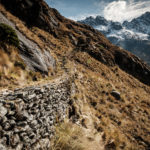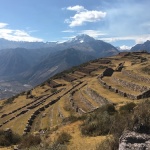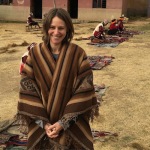
The yard as backdrop to Emry’s first birthday, October 2011
Sometimes I call it the patio, which is fairly accurate, and sometimes the garden, which is wishful thinking.
Mostly I call it the yard, which is what we called outdoor space where I grew up. In the desert, on one acre, in the ’80s, we had a front and a back yard: lawns, a wooden deck, a playhouse made by my dad and grandpa with square, circle, rectangle and triangle windows, swings, a plywood slide which would leave splinters in your butt if you dared slide rather than run down it, grape vines we kids sometimes harvested when the grapes were still hard sour balls, a giant willow tree with long graceful branches that danced in the wind, a silk tree I liked to climb into, a pool, a Jacuzzi, a pond with a cascading waterfall and a few hardy goldfish, and a fortified enclosure for the desert tortoises entrusted to our care, which they escaped from.
For me, the word yard carries the connotation of physical space, somewhat untamed: places to play, to explore, to hide out. But it also carries the memory of the mental space afforded to me as a child by our yards: space to forget the daily world, with its demands of practicing piano and being nice to people, and disappear into an imaginary one. That’s why, even though the outdoor space of this house where I am raising my children is miniscule in comparison to the one acre where I grew up, I persist in calling it the yard.
I’ve always hoped my children would play out there. When we moved in, I told Mikhail – it’s like an outdoor playpen with a big window into it. Looking out of our big picture window into this walled-in outdoor space, it reminds me of a fishbowl. I’ve always imagined my children would enjoy roaming their little sliver of dirt and trees, moss-decorated rock patio and scraggly grass, safely contained away from city streets and strangers, but free under the branches of the maple and camellia. But mostly they prefer the long, narrow driveway, because that’s better for wheels and balls.

Camellia blossom, February 2013
In the winter, the yard is given over to the salamanders who nest under the thick, airy blanket of fallen Japanese maple leaves and the piles of decomposing white camellia flowers. Emry and I go out and look under the big planter pots to find them – the skinny ones that look like tiny snakes with legs, and more rare but everyone’s favorite, the fatter, more typically salamander-shaped ones with gray skin that looks like it’s etched with gold stars.
What I don’t love is the piles of salamander poop that litter the leaves and the wood chips and the grass thinning without direct sun. But in the winter, I let it all go wild. My only intrusion is to water occasionally when the rain isn’t frequent. And to turn on and off the white star lights that line the bare trunk of the maple. From upstairs, I watch its branches for buds, signs of its rebirth. I love that tree. Its seasons mark time for me, give me a framework into which I can lay past and future, right there, outside my windows.
Once spring sun starts to make its way into the patio’s everlasting cool, I will go out with gloves and rake and tidy up. I will reassess the plants in the pots, which ones will come back and which ones will not. I will clear the half-brown camellia blooms, heavy and damp, from the wooden bench, and consider whether the bench would be used more if it had a cushion. I will wipe down the plasticky glass table and rust-edged white metal chairs that were there when we moved in and just stayed. I will rehang the art line, where we hang watercolors to dry when the summer sun warms this space and it becomes once again inhabited with messy art and bubble blowing and dinner picnics under the fresh young leaves of the maple tree.






